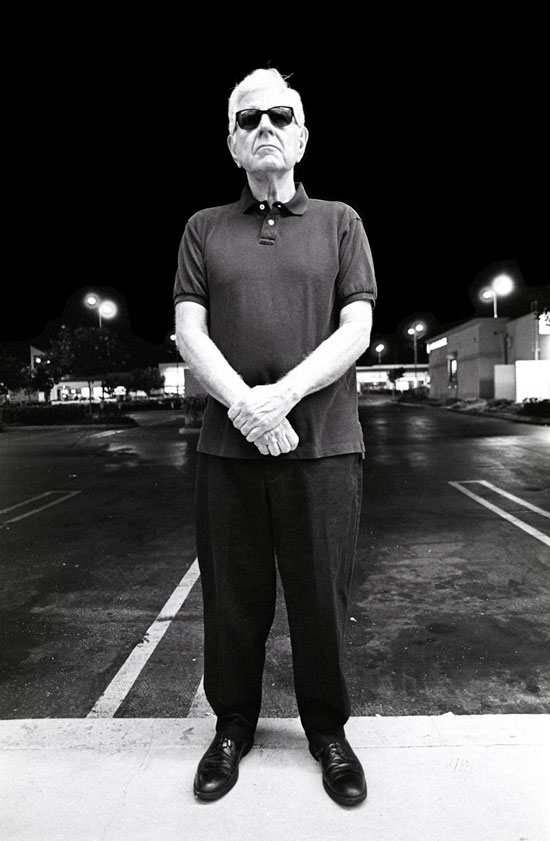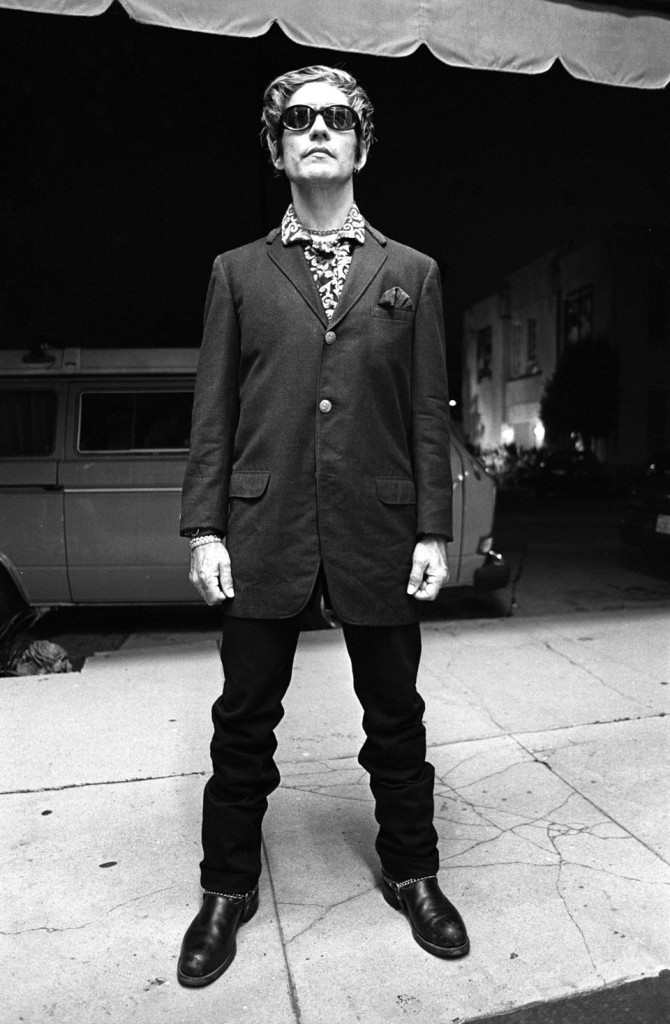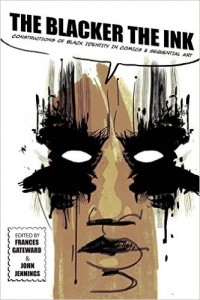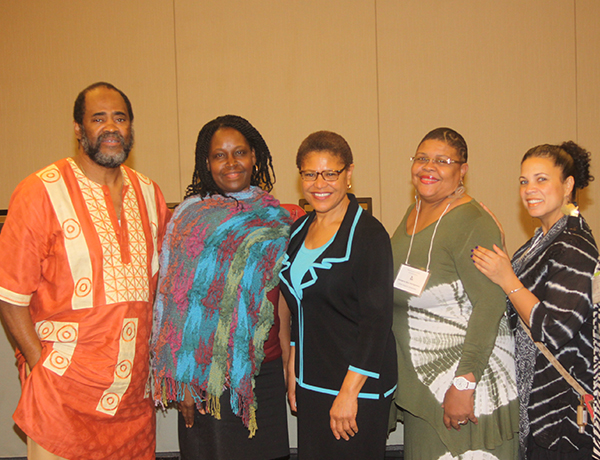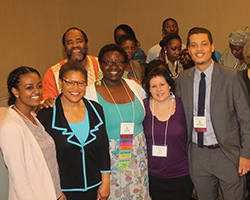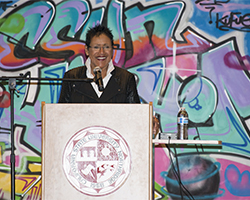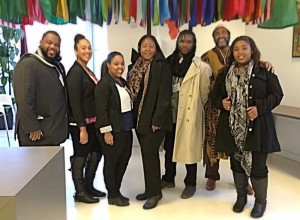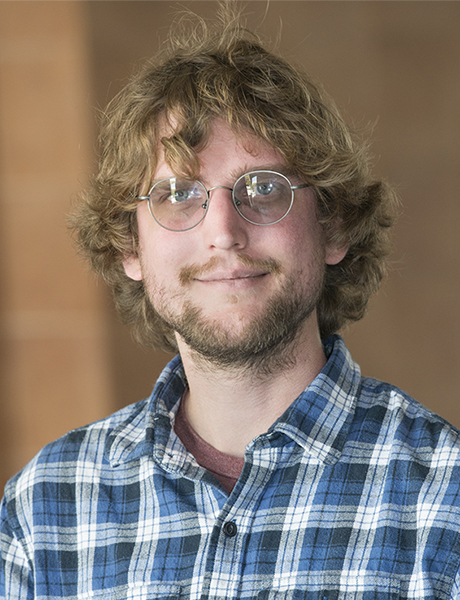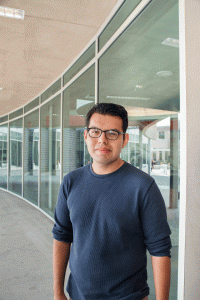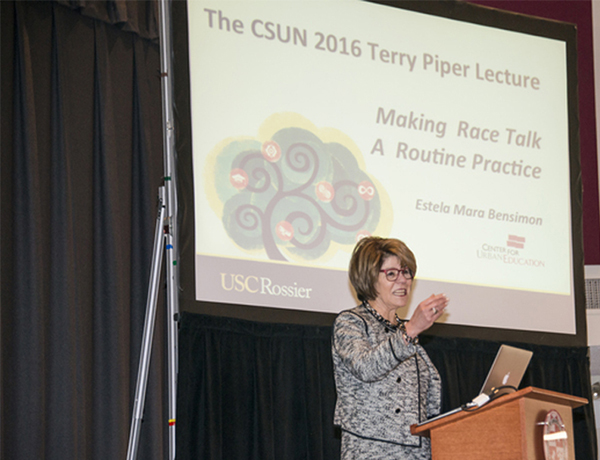

Estela Mara Bensimon, a national expert on methods to improve equity in higher education, spoke at CSUN during the fifth annual Terry Piper Lecture. Photo by Lee Choo.
Estela Mara Bensimon, a national expert on methods to improve equity in higher education, encouraged campus leaders at California State University, Northridge to “deconstruct” the institutional structures that prevent college campuses from making “race talk” a routine practice.
Bensimon, a distinguished professor of higher education at the USC Rossier School of Education and co-director of the Center for Urban Education, which she founded in 1999, spoke April 5 during the fifth-annual Terry Piper Lecture in the University Student Union’s Northridge Center. She said talking about race helps campuses engage in a process of self-reflection regarding race, equity and student success.
“We need to look at institutional structure, culture, practices and routines,” Bensimon said. She said institutions of higher education must take responsibility and examine everything from the language used to discuss and describe race and ethnicity to the data and diversity of the faculty teaching today’s students.
She said the use of ambiguous language such as URM (underrepresented minorities), at-risk, minority and highest-performing demographic can be insulting and get in the way of productive conversations about race. She also urged attendees to avoid terms such as Caucasian and European American.
“It’s another way of sweeping race under the rug,” Bensimon said. “Labels can be stigmatizing.”
The event is named in honor of Terry Piper, who served as vice president of student affairs at CSUN for nearly 10 years. He strove to actively partner with campus colleagues in support of student success, as a member of the university’s executive leadership team. He is credited with reshaping CSUN’s Division of Student Affairs to align with the most current thinking and practices supporting student learning and success. Piper passed away in May 2010 after a courageous battle with melanoma.
“This lecture series was conceived for the purpose of gathering together faculty, staff and administrators from all areas of the campus to acknowledge and promote our work together and reaffirm our mutual and interconnected responsibility for supporting student learning and success,” said William Watkins ’74 (Urban Studies), CSUN’s vice president of student affairs and dean of students, to the audience.
He said this lecture is a fitting tribute to not only Piper but to José Luis Vargas ’74 (Sociology), M.A. ’75 (Educational Psychology and Counseling), the longtime director of CSUN’s Educational Opportunity Programs (EOP) who passed away on March 19 after a brief illness.
Watkins asked the audience to stand and join him in a handclap of recognition for the two departed leaders.
Yi Li, CSUN provost and vice president for academic affairs, said the lecture serves to “build bridges.”
Bensimon, who developed the Equity Scorecard, a process for using inquiry to drive changes in institutional practice and culture, said universities have to look at structural racism.
“Many of our institutions of higher education were created at a time with different values,” Bensimon said. “Even though the demographics have changed, the same structures continue.”
As an example, Bensimon compared the racial and ethnic makeup of CSUN’s faculty to its student population.
In 2015, 66.3 percent of CSUN’s tenured and tenure-track faculty were white; 12.4 percent Asian; 9.5 percent Latina/o; 4.7 percent African-American; and 0.9 percent American Indian. However, 44.2 percent of CSUN’s students are Latina/o; 24 percent white; 11.5 percent Asian; 5 percent African-American; and 0.2 percent American Indian.
“We find ourselves in a perfect storm,” Bensimon said. She said today’s faculty is “unprepared for the students we have today.”

